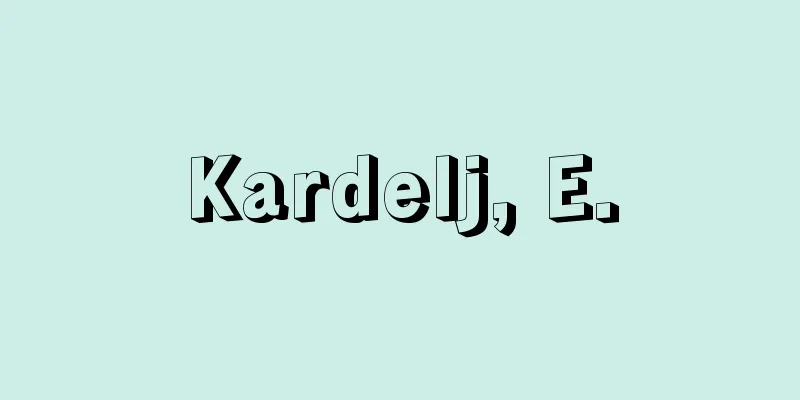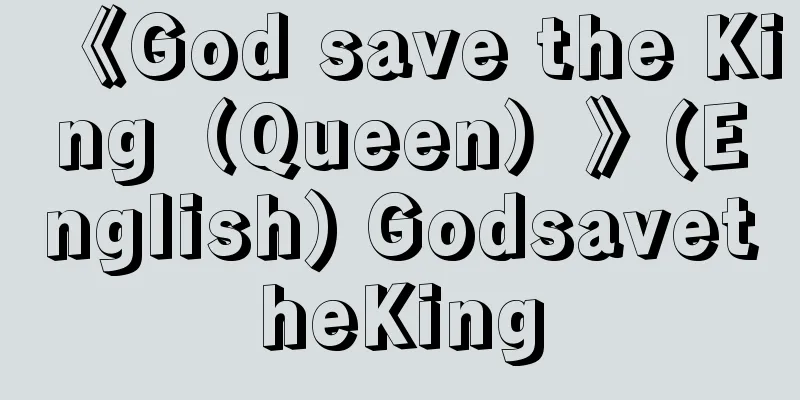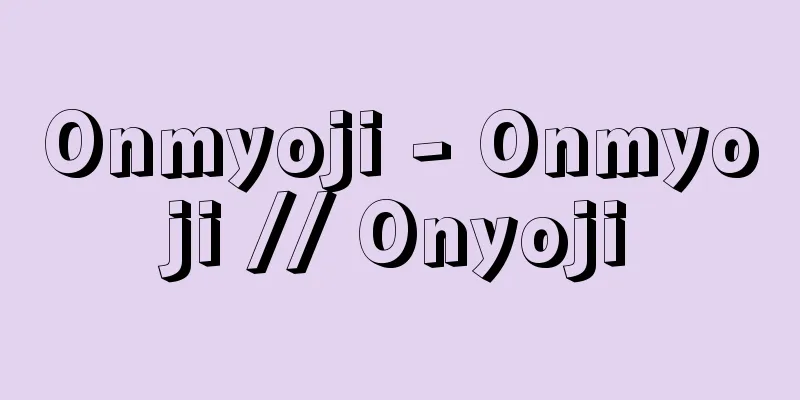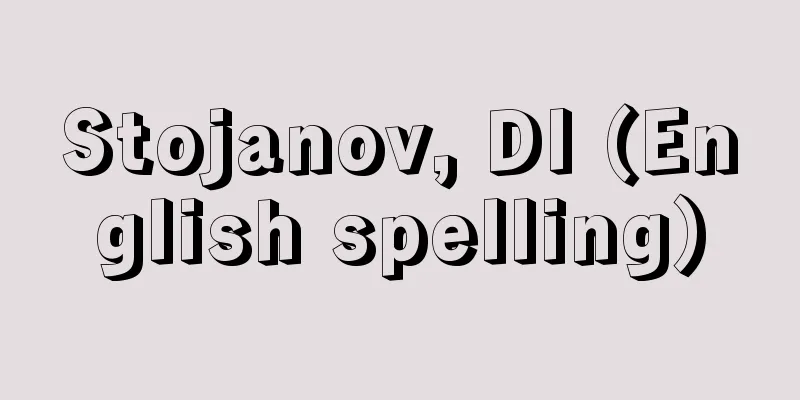Licensed fishing - kyokagyogyō
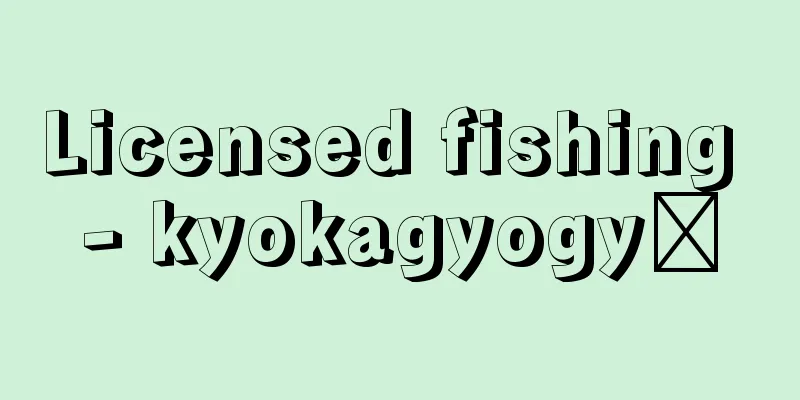
|
Under the Fisheries Law, fishing is generally prohibited from being conducted freely for public interest purposes such as protecting fishery resources and adjusting fishing disputes. This prohibition is lifted for specific individuals, and fishing is permitted under restrictions on fishing vessel size, fishing area, fishing season, etc. This applies to ordinary offshore and deep-sea fishing in general. It is basically considered a type of "police permission" and is different in nature from the licensed fishing system, which has rights. There are two main types of permitted fishing. One is designated fishing (Minister-approved fishing) permitted by the Minister of Agriculture, Forestry and Fisheries (hereinafter referred to as the Minister of Agriculture, Forestry and Fisheries) by ministerial ordinance, and the other is governor-approved fishing conducted based on the Prefectural Fisheries Adjustment Regulations. Designated fisheries is a system that was created through a revision of the Fisheries Law in 1962 (Showa 37) in order to unify the control of deep-sea fisheries. In principle, all fisheries are renewed at once every five years, and all details such as water areas and fishing vessel size are determined by ministerial ordinance. Anyone who wishes to operate a designated fishery needs permission from the Minister of Agriculture, Forestry and Fisheries for each vessel. Initially, 17 industries that operate in foreign waters or in the deep sea, such as deep-sea bottom trawl fishing and large-scale whaling, were designated by government ordinance. However, since the late 1980s, the fishing order under the 200-nautical-mile system has taken hold, forcing the reduction and reorganization of deep-sea fisheries, and currently 13 industries are designated by government ordinance. Of these, nine industries are subject to a simultaneous renewal system, including offshore bottom trawl fishing, westward bottom trawl fishing, deep-sea bottom trawl fishing, large and medium-sized purse seine fishing, deep-sea skipjack and tuna fishing, inshore skipjack and tuna fishing, North Pacific pacific saury fishing, Sea of Japan red snow crab fishing, and squid angling fishing. The total number of licensed vessels for designated fisheries was 1,530 as of October 1, 2014. In addition, four industries, including marlin drift net fishing in the East China Sea, etc., are treated as "special ministerially authorized fisheries" equivalent to designated fisheries by ministerial ordinance, and three industries, including coastal tuna longline fishing, are required to obtain approval, etc. On the other hand, fisheries licensed by the governor are targeted at relatively small-scale local fishing grounds in the coastal and offshore areas, such as regional net fishing, longline and trolling, cage fishing, and poaching, and the types of business are very diverse and often have different names and names. The governor, after hearing the opinion of the marine area fisheries adjustment committee, establishes fisheries adjustment regulations, such as prohibitions and restrictions on the capture and sale of aquatic animals and plants, prohibitions and restrictions on fishing gear and fishing boats, and restrictions on the number and qualifications of fishermen, as well as penalties, for the purpose of controlling and adjusting the fisheries. Furthermore, prefectures also have regulations similar to the governor's license system, such as "committee instructions," which allow the fisheries adjustment committee to independently establish fishing prohibitions and restrictions. For the four industries of small-scale mechanized bottom trawl fishing, medium-sized purse seine fishing, Seto Inland Sea mechanized trawl fishing, and small-scale salmon and trout drift net fishing, given that the impact of fishing operations has a wide range of areas, the Minister of Agriculture, Forestry and Fisheries uniformly regulates the maximum number of permitted vessels, etc., and these are fisheries permitted by the governor under this system. Therefore, these are called "statutory governor-approved fisheries" under the ministerial framework. The names of fisheries types and fishing methods used are generally known, although they differ from those used in the fisheries system and agriculture, forestry and fisheries statistics. [Katsuji Hiroyoshi September 15, 2015] "Katsuharu Hiroyoshi and Masaaki Sano (eds.), 'Learn Fisheries Economics by Summarizing the Key Points', 2nd Edition (2009, Hokuto Shobo)" [Reference items] | | | | | |Source: Shogakukan Encyclopedia Nipponica About Encyclopedia Nipponica Information | Legend |
|
漁業法に基づき、水産資源の保護や漁業紛争の調整など公益上の目的から、自由に営むことを一般に禁止している漁業について、特定の者に限り禁止を解いて、かつ漁船規模、漁区、漁期等の制限条件のもとで漁獲を行えるようにした漁業。通常の沖合・遠洋漁業一般がこれにあたる。基本的に「警察許可」の一種と解され、権利性を有する免許漁業制度とは性質を異にする。許可漁業には大別して二つの種類がある。一つは農林水産大臣(以下、農水大臣)が省令により許可する指定漁業(大臣許可漁業)であり、もう一つは都道府県漁業調整規則に基づいて行われる知事許可漁業である。 指定漁業は遠洋漁業等を統一的に掌握するため、1962年(昭和37)の漁業法改正により見直され創設された制度である。原則として5年に一度の一斉更新制がとられ、水域や漁船規模等の内容はすべて省令で定められる。指定漁業を営もうとする者は船舶ごとに農水大臣の許可が必要であり、当初、遠洋底引網漁業や大型捕鯨業等外国水域や遠洋で操業する17業種が政令指定されていたが、1980年代後半以降、200海里体制下の漁業秩序が浸透して遠洋漁業の縮減や再編が余儀なくされ、現在13業種で政令指定がある。そのうち沖合底引網漁業、以西底引網漁業、遠洋底引網漁業、大中型巻網漁業、遠洋カツオ・マグロ漁業、近海カツオ・マグロ漁業、北太平洋サンマ漁業、日本海ベニズワイガニ漁業、イカ釣漁業等の9業種で一斉更新制がとられている。指定漁業全体の許認可隻数は2014年10月1日時点で1530隻であった。このほか、省令により指定漁業に準ずる扱いの「特定大臣許可漁業」として東シナ海等カジキ等流し網漁業ほか4業種が、「届出漁業」として沿岸マグロ延縄(はえなわ)漁業ほか3業種が、それぞれ承認等を得るものと定められている。 他方、知事許可漁業は、地域的な網漁業、延縄・釣漁業、カゴ漁業、突きん棒等々やや小規模、かつ近海・沖合での地元漁場を対象としており、業種は非常に雑多で表記も呼称もまちまちである場合が多い。知事は海区漁業調整委員会の意見を聞いたうえで漁業取締や漁業調整を目的として水産動植物の採捕および販売等の禁止や制限、漁具・漁船の禁止や制限、漁業者の数や資格制限等の規制ならびに罰則等を漁業調整規則として定めている。さらに都道府県には漁業調整委員会が独自に漁業の禁止や制限等を定めうる「委員会指示」等、知事許可制度に準ずる規定もある。小型機船底引網漁業、中型巻網漁業、瀬戸内海機船船引網漁業、小型サケ・マス流し網漁業の4業種については、操業の影響が広域に及ぶ特性があることにかんがみ、許可隻数の最高限度等を農水大臣が統一的に規制しそのもとでの知事許可漁業とされるため、大臣枠の「法定知事許可漁業」とよばれる。 なお、漁業種類や漁法の名称については、漁業制度や農林水産統計で用いる表記とは異なるが、一般に通行しているものを用いた。 [廣吉勝治 2015年9月15日] 『廣吉勝治・佐野雅昭編著『ポイント整理で学ぶ水産経済』第2版(2009・北斗書房)』 [参照項目] | | | | | |出典 小学館 日本大百科全書(ニッポニカ)日本大百科全書(ニッポニカ)について 情報 | 凡例 |
<<: Permission appeal - Kyokakoukoku
>>: Licensed business - Licensed business
Recommend
Open cycle gas turbine
…Part of the power generated by the turbine is us...
Takehara-han
Japanese dancer. Her real name was Sachiko. She w...
Yakushiji Temple
[1] A temple located in Minamikawachi-cho, Kawachi...
Fortune teller - Bokusenkan
A translation of the word augur, an official divin...
condominium
…A general term for birds of the Cathartidae fami...
"Banking Bureau Financial Annual Report"
…Of these, the Flow of Funds Account is a part of...
Itanko
…(1) A mathematical term. Also called topology. T...
Sejanus, LA (English spelling) SejanusLA
…Roman politician. Also known as Sejanus. His mot...
Aizu Clan
A domain centered in the Mutsu region, Azuchi Cou...
Grammitidaceae
...It was named after Okubo Saburo, an assistant ...
Qurna al-Saudā' (English spelling) Qurna al Sauda
…The eastern side of the mountain falls steeply a...
Sake bottle - Tokuri
A type of sake vessel, a container for pouring sa...
Emblem - Kiboku
〘Noun〙 Ink produced in Huizhou Prefecture, Anhui P...
Salta (English spelling)
The capital of Salta Province in northwestern Arge...
Sanbei Ikki - Sanhe Iikki
A peasant uprising occurred in Morioka Domain duri...
